|
|
Search Resources (50 Results)
 |
|
Lecture Notes | Approved: 6 years ago | 43.06 kB | Comments: 0
...the loss of electrons by a substance...
...the gain of electrons by a substance....
...substance by removing electrons from that substance....
...is gaining the electrons that it pulls...
...away its own electrons to the substance...
...is losing those electrons, it becomes oxidized...
...give away its electrons to reduce another...
...= moles of electrons transferred F =...
...= moles of electrons transferred F =...
...3 moles of electrons are gained to...
| N/A |
144
|
Guest
|
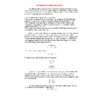 |
|
Lecture Notes | Approved: 6 years ago | 18.23 kB | Comments: 0
...by removing the electrons from that substance....
...agent gains the electrons it is removing...
...away its own electrons to the substance...
...agent loses these electrons and is oxidized....
...away its own electrons to the nitrogen...
...copper lost these electrons, was oxidized. Similarly,...
..."ripped off" the electrons from the copper...
...in gaining those electrons, it was reduced....
| N/A |
166
|
Guest
|
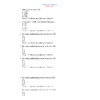 |
|
Solutions | Approved: 6 years ago | 257.67 kB | Comments: 0
...the existence of electrons. C) the existence...
...the number of electrons equals the number...
...the number of electrons is less than...
...the number of electrons is greater than...
...the number of electrons is equal to...
...many neutrons as electrons. D) as many...
...D) as many electrons as protons. B)...
...many nuclei as electrons. Ans: D 16. Which...
...nucleus contains the electrons and the protons....
...A) Protons and electrons D) Only electrons...
...electrons D) Only electrons B) Electrons and...
...Only electrons B) Electrons and neutrons E)...
...an element. A) electrons D) neutrons plus...
...E) protons plus electrons C) neutrons Ans: B...
...the number of electrons its atom can...
...the number of electrons in that atom....
...D) Number of electrons B) Number of...
...A) number of electrons. B) sum of...
...the number of electrons and neutrons. D)...
...the number of electrons, protons, and neutrons....
...of protons and electrons. B) the number...
...the number of electrons. E) their physical...
...the number of electrons is ________ than...
...the number of electrons is ________ than...
...protons, neutrons, and electrons for 40Ca2+: A)...
...neutrons, and 20 electrons B) 40 protons,...
...neutrons, and 18 electrons C) 20 protons,...
...neutrons, and 18 electrons D) 20 protons,...
...neutrons, and 22 electrons E) 60 protons,...
...neutrons, and 18 electrons Ans: C 38. List...
...protons, neutrons, and electrons for 35Cl: A)...
...neutrons, and 18 electrons B) 18 protons,...
...neutrons, and 17 electrons C) 17 protons,...
...neutrons, and 18 electrons D) 17 protons,...
...neutrons, and 17 electrons E) 52 protons,...
...neutrons, and 18 electrons Ans: C 39. List...
...protons, neutrons, and electrons for 37Cl?: A)...
...neutrons, and 18 electrons B) 20 protons,...
...neutrons, and 17 electrons C) 17 protons,...
...neutrons, and 18 electrons D) 17 protons,...
...neutrons, and 20 electrons E) 54 protons,...
...neutrons, and 18 electrons Ans: C 40. Which...
...has as many electrons as it has...
...protons, neutrons, and electrons are in an...
...neutrons, and 10 electrons is: A) B)...
...neutrons, and 10 electrons is: A) B)...
...neutrons, and 10 electrons is: A) B)...
...Nonmetals usually gain electrons to form ions...
...metals usually lose electrons to form ions...
...nucleus disintegrates. D) Electrons are lost or...
...Either protons or electrons are lost or...
...D) protons and electrons B) protons E)...
...E) neutrons and electrons C) electrons Ans: C...
...and electrons C) electrons Ans: C 91. The...
...ions containing 18 electrons. What is the...
...its number of electrons must equal its...
...that has fewer electrons than protons. Ans: True...
...that has more electrons than protons. Ans: False...
...protons, neutrons, and electrons, and show the...
...will lose enough electrons to have the...
...same number of electrons as the noble...
...sufficient quantity of electrons to “catch up”...
| N/A |
228
|
tjeff20161982
|
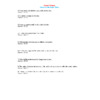 |
|
Solutions | Approved: 6 years ago | 97.2 kB | Comments: 0
...D) existence of electrons E) existence of...
...each other. C) Electrons were once known...
...the same as electrons. Answer: E 18)...
...charge-to-mass ratio for electrons. E) Michael Faraday...
...and called them electrons. Answer: E 19)...
...D) protons E) electrons Answer: C 20)...
...an electron. E) Electrons and protons have...
...of neutrons and electrons in the atom...
...plate D) are electrons E) have the...
...lost or gained electrons IV) is called...
...variable number of electrons gives the fractional...
...A) Metals gain electrons to have a...
...B) Metals gain electrons to have a...
...C) Metals lose electrons to have a...
...D) Nonmetals lose electrons. E) Transition metals...
...2 or more electrons to become metal...
...neutrons, protons, and electrons in 31P3- are:...
...31 protons, 15 electrons B) 16 neutrons,...
...15 protons, 18 electrons C) 31 neutrons,...
...15 protons, 18 electrons D) 15 neutrons,...
...16 protons, 12 electrons E) 16 neutrons,...
...16 protons, 18 electrons Answer: B 62)...
...neutrons, protons, and electrons in 35Cl- are...
...35 protons, 36 electrons B) 35 neutrons,...
...17 protons, 18 electrons C) 18 neutrons,...
...17 protons, 16 electrons D) 18 neutrons,...
...17 protons, 18 electrons E) 17 neutrons,...
...17 protons, 17 electrons Answer: D 63)...
...neutrons, protons, and electrons in 138Ba2+ are...
...56 protons, 54 electrons B) 82 neutrons,...
...56 protons, 54 electrons C) 56 neutrons,...
...82 protons, 80 electrons D) 82 neutrons,...
...56 protons, 58 electrons E) 82 neutrons,...
...82 protons, 82 electrons Answer: B 64)...
...neutrons and 10 electrons. If it has...
...neutrons and 21 electrons. If it has...
...neutrons and 36 electrons. If it has...
...protons, neutrons, and electrons are in ?...
...12 protons, 10 electrons, 12 neutrons B)...
...12 protons, 12 electrons, 12 neutrons C)...
...12 protons, 12 electrons, 24 neutrons D)...
...24 protons, 10 electrons, 12 neutrons E)...
...10 protons, 12 electrons, 24 neutrons Answer:...
...protons, and 16 electrons. A) B) C)...
...35 protons, 36 electrons and 45 neutrons?...
| N/A |
196
|
tjeff20161982
|
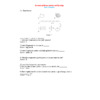 |
|
Solutions | Approved: 6 years ago | 70.22 kB | Comments: 0
...__________. Answer: protons; electrons 9) The sum...
...water, result when electrons are shared __________....
...neutrons, and 10 electrons is a(n): A)...
...B) neutrons C) electrons D) protons and...
...D) protons and electrons E) protons and...
...will have __________ electrons in its valence...
...neutrons, and 6 electrons shares four pairs...
...four pairs of electrons with four other...
...neutrons, and 6 electrons. Its atomic mass...
...number of: A) electrons in the atomic...
...D) protons plus electrons E) neutrons plus...
...E) neutrons plus electrons Answer: B 14)...
...atomic masses C) electrons; atomic numbers D)...
...has lost two electrons is called a(n):...
...B) neutrons C) electrons D) isotopes E)...
...a pair of electrons is shared equally...
...F) protons and electrons G) proton(s) and...
...fewer than 8 electrons, an atom will...
...lose, or share electrons with other atoms...
...lost or gained electrons through ionic bonding....
...of protons and electrons. 4) Explain how...
...polar covalent bonds, electrons are not shared...
...nonpolar covalent bonds, electrons are shared equally....
| N/A |
152
|
tjeff20161982
|
 |
|
Solutions | Approved: 6 years ago | 69.85 kB | Comments: 0
...A) neutrons and electrons in nucleus; protons...
...nucleus; protons and electrons in orbitals C)...
...neutrons in nucleus; electrons in orbitals D)...
...D) protons and electrons in nucleus; neutrons...
...in orbitals E) electrons in nucleus; protons...
...protons, neutrons, and electrons. A) protons +1,...
...+1, neutrons 0, electrons -1 B) protons...
...0, neutrons -1, electrons +1 C) protons...
...-1, neutrons 0, electrons +1 D) protons...
...0, neutrons +1, electrons -1 E) protons...
...+1, neutrons -1, electrons 0 Answer: A...
...number of the electrons and protons. B)...
...the neutrons and electrons. C) the sum...
...protons, neutrons, and electrons. D) the sum...
...protons, neutrons and electrons in the following:...
...protons, neutrons and electrons in the following:...
...protons, neutrons and electrons in the following:...
...of protons and electrons. B) Protons have...
...same mass as electrons. C) Electrons make...
...as electrons. C) Electrons make up most...
...E) Neutrons and electrons are found in...
...the number of electrons they contain. B)...
...number of A) electrons. B) neutrons. C)...
...and protons. E) electrons and protons. Answer:...
...tends to gain electrons D) forms ionic...
...tend to gain electrons B) found in...
...tend to gain electrons. Answer: D 37)...
...131Xe contains ________ electrons. A) 131 B)...
...6) How many electrons are in nickel?...
...neutrons, and 10 electrons. The symbol for...
...B) protons C) electrons D) neutrons E)...
...13) How many electrons does the Al3+...
...26) How many electrons are in a...
...Q2+ contains 10 electrons? A) C B)...
...the number of electrons in P-3. A)...
...34) How many electrons are in the...
...35) How many electrons are in the...
...same number of electrons? A) F-, Ne,...
...nucleus surrounded by electrons. The nucleus contains...
...by negatively charged electrons, the same number...
...determined by the electrons, isotopes of the...
...anion contains more electrons than the atom....
...the atom. Since electrons repel one another...
...or ion, adding electrons to the atom...
...or gain of electrons; isotopes differ in...
...number of valence electrons (similar electron configurations)...
...typically involve valence electrons. 11) Give the...
| N/A |
180
|
tjeff20161982
|
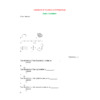 |
|
Solutions | Approved: 6 years ago | 190.22 kB | Comments: 0
...water, result when electrons are shared __________....
...neutrons, and 10 electrons is a(n): A)...
...B) neutrons C) electrons D) protons and...
...D) protons and electrons E) protons and...
...will have __________ electrons in its valence...
...are positively charged, electrons are neutral, and...
...are positively charged, electrons are negatively charged,...
...are negatively charged, electrons are neutral, and...
...are negatively charged, electrons are positively charged,...
...protons are neutral, electrons are negatively charged,...
...neutrons, and 6 electrons. Its atomic mass...
...number of: A) electrons in the atomic...
...D) protons plus electrons E) neutrons plus...
...E) neutrons plus electrons Answer: B 14)...
...atomic masses C) electrons; atomic numbers D)...
...has lost two electrons is called a(n):...
...B) neutrons C) electrons D) isotopes E)...
...a pair of electrons is shared equally...
...bond in which electrons are completely lost...
...bond in which electrons are shared unequally...
...two pairs of electrons 5) Type of...
...fewer than 8 electrons, an atom will...
...lose, or share electrons with other atoms...
...polar covalent bonds, electrons are not shared...
...nonpolar covalent bonds, electrons are shared equally....
| N/A |
118
|
tjeff20161982
|
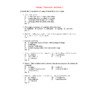 |
|
Solutions | Approved: 6 years ago | 45.08 kB | Comments: 0
...ray tube A) electrons pass from the...
...the cathode. B) electrons pass from the...
...an atom. B) electrons have a negative...
...negative charge. C) electrons have a positive...
...protons, neutrons, and electrons. E) protons are...
...times heavier than electrons. Ans: A 9. Atoms...
...protons, neutrons, and electrons? (p = proton,...
...of protons (p), electrons (e), and neutrons...
...E) number of electrons. C) atomic mass....
...protons and 13 electrons. D) 24 protons...
...protons and 22 electrons. B) 24 protons...
...protons and 26 electrons. E) 12 protons...
...protons and 14 electrons. C) 12 protons...
...protons and 10 electrons. Ans: C 19. An...
...protons and 13 electrons D) 13 protons...
...protons and 10 electrons B) 27 protons...
...protons and 24 electrons E) 10 protons...
...protons and 13 electrons C) 16 protons...
...protons and 13 electrons Ans: D 20. An...
...protons and 10 electrons D) 8 protons...
...protons and 7 electrons B) 10 protons...
...protons and 8 electrons E) 10 protons...
...protons and 7 electrons C) 8 protons...
...protons and 9 electrons Ans: A 21. A...
...protons and 13 electrons D) 15 protons...
...protons and 18 electrons B) 12 protons...
...protons and 15 electrons E) 18 protons...
...protons and 21 electrons C) 15 protons...
...protons and 15 electrons Ans: D 22. An...
...has: A) 24 electrons and a charge...
...2+ D) 28 electrons and a charge...
...2+ B) 24 electrons and a charge...
...2– E) 28 electrons and a charge...
...2– C) 26 electrons and a charge...
...many protons and electrons are present in...
...in chemistry? Ans: electrons, protons, and neutrons...
...65. How many electrons, protons, and neutrons...
...have? Ans: 26 electrons, 26 protons, and...
...of protons and electrons) and that the...
...(protons, neutrons, and electrons) in an atom...
...(protons, neutrons, and electrons) in an atom...
...(protons, neutrons, and electrons) in an atom...
...120 Number of electrons 79 80 80...
...sulfur: How many electrons, protons, and neutrons...
...contain? Ans: 16 electrons, 16 protons, and...
...105. How many electrons, protons, and neutrons...
...calcium? Ans: 20 electrons, 20 protons, and...
...106. How many electrons, protons, and neutrons...
...krypton? Ans: 36 electrons, 36 protons, and...
...107. How many electrons, protons, and neutrons...
...gadolinium? Ans: 64 electrons, 64 protons, and...
| N/A |
166
|
tjeff20161982
|
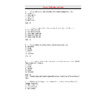 |
|
Solutions | Approved: 6 years ago | 108.93 kB | Comments: 0
...tube proved that electrons have a negative...
...by attraction to electrons C) be reflected...
...44 neutrons, 35 electrons B) 34 protons...
...protons and 35 electrons, only C) 44...
...44 protons, 44 electrons, and 35 neutrons...
...neutrons, and 35 electrons E) 79 protons,...
...79 protons, 79 electrons, and 35 neutrons...
...the number of electrons in the neutral...
...removing protons or electrons. B) Scientists believe...
...The number of electrons in an atom...
...neutrons, and 18 electrons B) 22 protons,...
...neutrons, and 20 electrons C) 20 protons,...
...neutrons, and 18 electrons D) 22 protons,...
...neutrons, and 18 electrons E) 20 protons,...
...neutrons, and 22 electrons ANS: A REF:...
...same number of electrons as . D)...
...protons and 10 electrons is A) Ne2+...
...protons, neutrons, and electrons in K+ are:...
...adding or subtracting electrons from the atom...
...formed by adding electrons to a neutral...
...formed by removing electrons from a neutral...
...tend to gain electrons in chemical reactions...
...protons, and 46 electrons? A) Pm B)...
...many protons and electrons does the most...
...# protons # electrons A) 10 p...
...ion has 26 electrons. What is the...
...# Neutrons # Electrons Net Charge 206Pb...
...# Neutrons # Electrons Net Charge 206Pb...
...46 Number of electrons Atomic number Mass...
...46 Number of electrons 28 36 Atomic...
...protons, neutrons and electrons, in that order...
...protons, neutrons and electrons, in that order...
...equal number of electrons and neutrons C)...
...of protons and electrons E) An atom...
...23 protons, 18 electrons and 27 neutrons?...
...that consists of electrons and is deflected...
...an atom. B) electrons have a negative...
...negative charge. C) electrons have a positive...
...protons, neutrons, and electrons. E) protons are...
...times heavier than electrons. Ans: A 10. J....
...cathode ray particles (electrons) and was able...
...fractional numbers of electrons. E) suggested the...
...the presence of electrons outside the nucleus...
...gold foil with electrons. B) The proton...
...of protons and electrons. E) An atomic...
...the number of electrons outside the nucleus?...
...protons, neutrons, and electrons? (p = proton,...
...of protons (p), electrons (e), and neutrons...
...E) number of electrons. C) atomic mass....
...protons and 13 electrons. D) 24 protons...
...protons and 22 electrons. B) 24 protons...
...protons and 26 electrons. E) 12 protons...
...protons and 14 electrons. C) 12 protons...
...protons and 10 electrons. Ans: C 28. An...
...protons and 13 electrons D) 13 protons...
...protons and 10 electrons B) 27 protons...
...protons and 24 electrons E) 10 protons...
...protons and 13 electrons C) 16 protons...
...protons and 13 electrons Ans: D 29. An...
...protons and 10 electrons D) 8 protons...
...protons and 7 electrons B) 10 protons...
...protons and 8 electrons E) 10 protons...
...protons and 7 electrons C) 8 protons...
...protons and 9 electrons Ans: A 30. A...
...protons and 16 electrons D) 16 protons...
...protons and 18 electrons B) 32 protons...
...protons and 16 electrons E) 32 protons...
...protons and 18 electrons C) 16 protons...
...protons and 14 electrons Ans: D 31. How...
...many protons and electrons are present in...
...protons and 50 electrons. Ans: True 83. Copper...
...# neutrons # electrons … 17 18...
...108. ______________ are electrons that are deflected...
...120 Number of electrons 79 80 80...
...of protons and electrons) and that the...
| N/A |
367
|
tjeff20161982
|
 |
|
Solutions | Approved: 6 years ago | 497.65 kB | Comments: 0
...protons, neutrons, and electrons. B) All atoms...
...made up of electrons. E) The characteristics...
...consist of fast-moving electrons. A) Alpha B)...
...(protons, neutrons, and electrons) all have essentially...
...(protons, neutrons, and electrons) all have essentially...
...B) X-rays C) electrons D) protons E)...
...D) number of electrons and neutrons E)...
...There are ________ electrons, ________ protons, and...
...neutrons, and ________ electrons. A) 197, 79,...
...protons, neutrons, and electrons is correct for...
...isotope has 36 electrons in an atom?...
...subatomic particles E) electrons Answer: E 30)...
...are ________. A) electrons B) protons C)...
...protons, neutrons, and electrons Answer: C 31)...
...protons, neutrons, and electrons E) subatomic particles...
...protons, neutrons, and electrons E) None of...
...greatest number of electrons. A) P3+ B)...
...species has 54 electrons? A) Xe+ B)...
...species has 18 electrons? A) 39K B)...
...has as many electrons as it has...
...neutrons, and ________ electrons in I-. A)...
...neutrons, and ________ electrons in U+5. A)...
...species has 48 electrons? A) Sn+2 B)...
...salt has 46 electrons. The metal X...
...nucleus. A) Protons, electrons B) Electrons, neutrons...
...Protons, electrons B) Electrons, neutrons C) Protons,...
...of protons or electrons in a neutral...
...contains ________. A) electrons B) protons, neutrons,...
...protons, neutrons, and electrons C) protons and...
...D) protons and electrons E) protons Answer:...
...tends to lose electrons and the ________...
...tends to gain electrons. A) metal, metal...
...these elements share electrons. Answer: C Page...
...________ protons, ________ electrons, and ________ neutrons...
...14C contains ________ electrons. A) 14 B)...
...15) How many electrons are there in...
...How many total electrons are in the...
...How many total electrons are in the...
...atom loses 2 electrons to make an...
...atom gains 3 electrons to make an...
...neutrons, and 23 electrons. The symbol for...
...35) How many electrons does the As3-...
...likely to gain electrons when forming an...
...salt has 24 electrons. The metal X...
...M-ion has 21 electrons. Element M is...
| N/A |
215
|
tjeff20161982
|
|
Post your homework questions and get free online help from our incredible volunteers
|